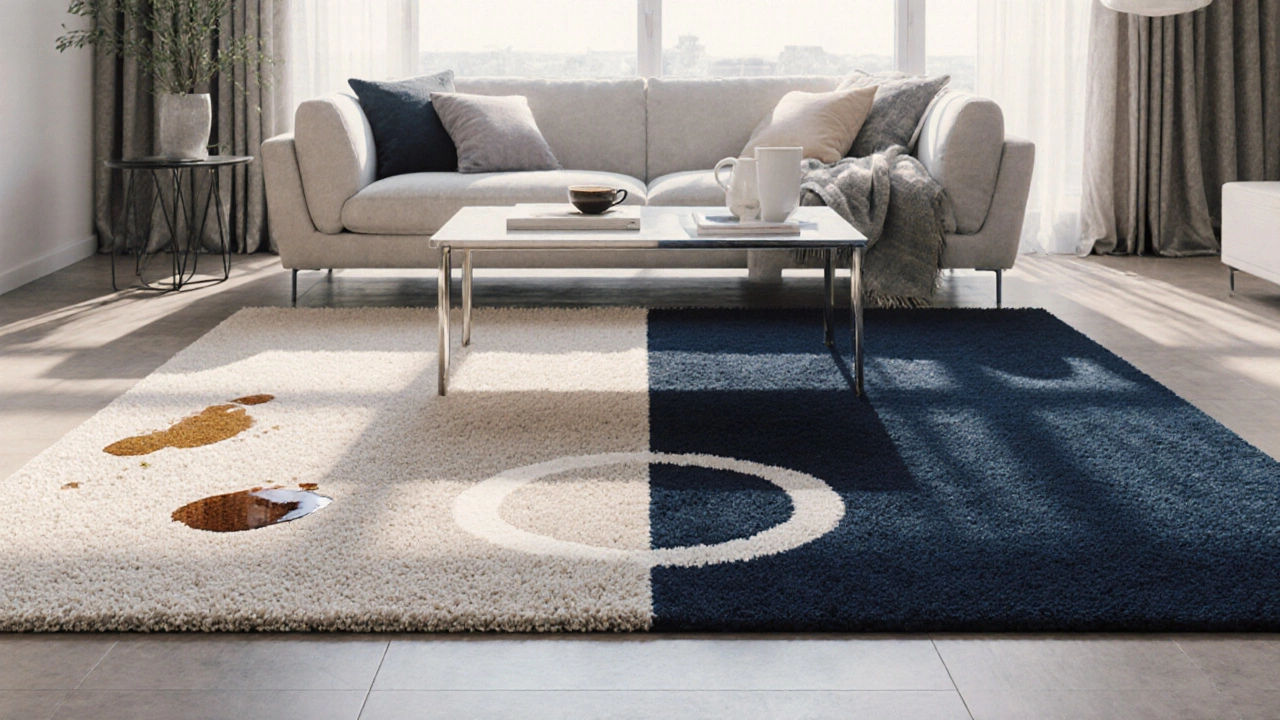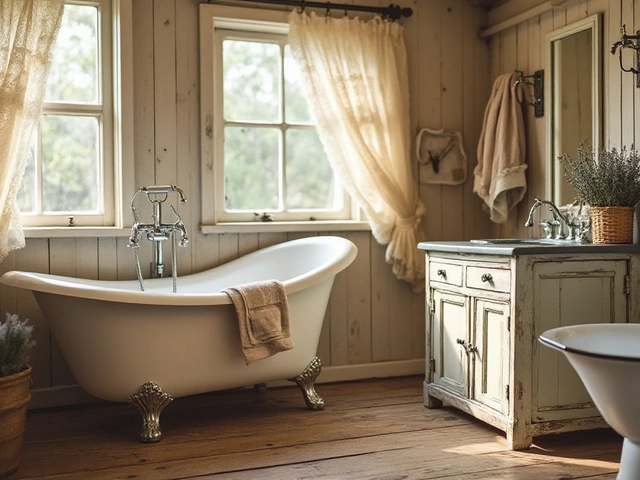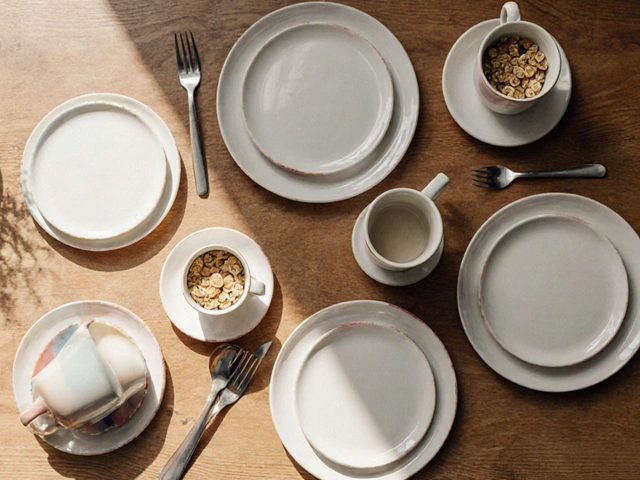Rug Color Dirt-Hiding Calculator
Select Your Room Conditions
Ever notice how some rugs look spotless even after weeks of foot traffic, while others scream for a deep clean the moment a speck appears? The secret isn’t magic-it’s the color you pick. Picking the best rug color for your space can save you hours of vacuuming and keep your living room looking fresh longer.
Why Color Plays a Bigger Role Than You Think
We often think of rugs as a design statement, but they’re also a practical shield against daily grime. Light reflects more of the dirt’s color, making stains pop. Dark shades absorb light, so tiny particles blend in. The science behind it is simple: the greater the contrast between the dirt and the rug’s hue, the more noticeable the mess.
Rug is a floor covering made from woven or tufted fibers, used to add comfort and style to a room. When you pair a rug with the right color, you’re effectively building a low‑maintenance canvas for everyday life.
Light vs. Dark: The Basics
- Light neutrals (beige, ivory, light gray): Great for bright rooms, but they reveal crumbs, coffee stains, and pet hair quickly.
- Mid‑tone hues (sage, muted teal, taupe): Offer a balance-still bright enough to open a space, yet dark enough to mask most everyday messes.
- Deep shades (navy, charcoal, olive): Excellent at disguising dirt, especially in high‑traffic zones, but they can make a room feel smaller if the lighting is poor.
Top Colors That Hide Dirt Best
Below are the colors that consistently outperform others when it comes to camouflaging dirt. Each entry includes a quick tip on how to match it with common décor styles.
Gray is a neutral hue ranging from light silver to deep charcoal, beloved for its versatility in modern interiors. A medium‑gray rug hides coffee spills and dust while complementing both wood flooring and painted walls.
Olive Green is a muted earth tone that blends well with natural materials like wood and wicker. Its green undertones mask grass stains and pet hair, making it a top pick for families with kids or dogs.
Navy Blue is a deep, cool hue that adds depth to a room while concealing most food‑related stains. Pair it with light wood or white furniture for a balanced look.
Other effective shades include deep charcoal, burnt amber, and muted mauve. The key is choosing a tone that’s at least two steps darker than the most common stain color you anticipate (e.g., coffee, red wine, or mud).
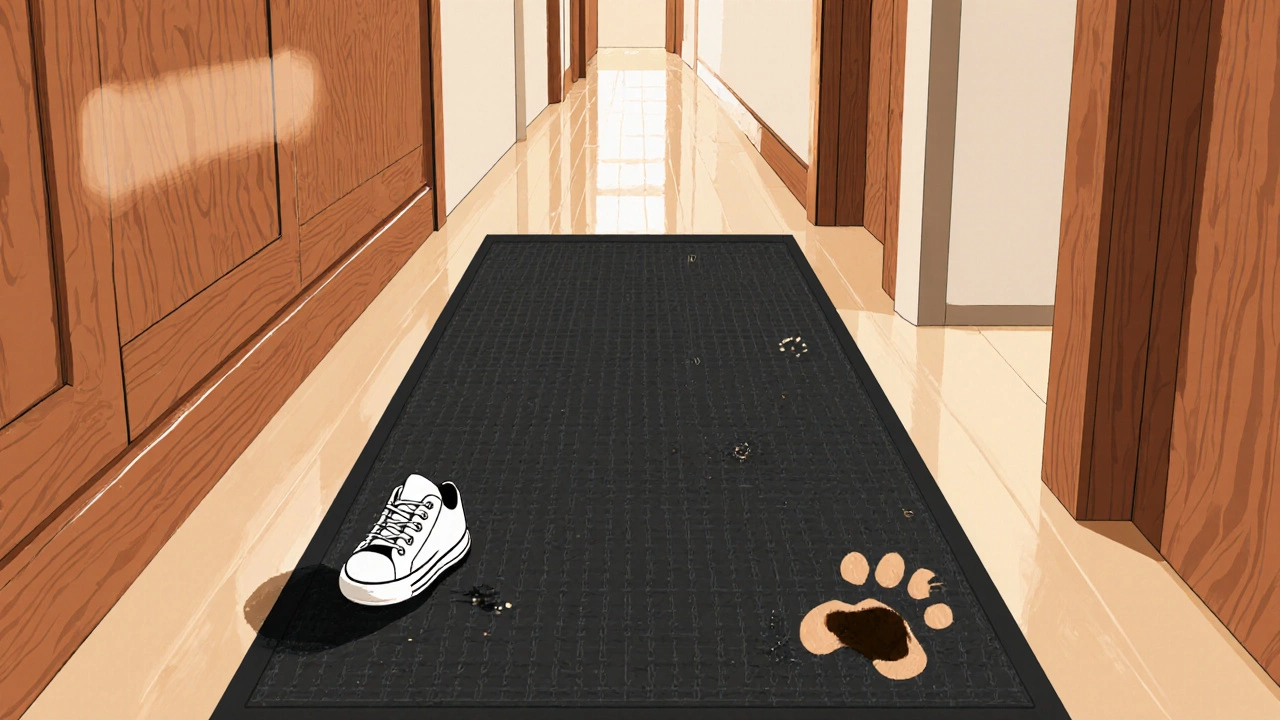
How Rug Material Affects Dirt Visibility
Color isn’t the only factor; the rug’s texture and fiber type decide how quickly dirt settles and how easily it’s lifted.
- Low‑pile rug is a rug with short, tightly woven fibers that resists trapping debris. Ideal for busy hallways and modern apartments.
- High‑pile rug is a rug with longer, fluffy fibers that feel soft underfoot but collect more dust and pet hair. Best for cozy bedrooms where style trumps traffic.
- Wool rug is a natural fiber known for durability and stain resistance, especially when treated with a protective coating. Holds color well, so dark shades stay dark.
- Synthetic rug is a rug made from polyester, nylon, or acrylic, offering budget‑friendly options and easy cleaning. Perfect for families; colors stay vibrant longer.
When you combine a dark, low‑contrast color with a low‑pile synthetic rug, you get the ultimate low‑maintenance solution.
Practical Tips to Keep Your Rug Looking Fresh
- Vacuum regularly. A high‑efficiency vacuum with a beater bar removes surface dust before it settles. For low‑pile rugs, a quick pass once a week is enough; high‑pile may need twice.
- Rotate the rug. Turn it 180° every 3-6 months to even out wear patterns, especially in high‑traffic zones.
- Spot‑clean promptly. Blot (don’t rub) spills with a clean cloth, then gently work a mild carpet cleaner from the edge toward the center.
- Use rug pads. A quality pad prevents slipping and adds a barrier that reduces dirt being pushed through the backing.
- Invest in stain‑resistant treatments. Many manufacturers offer a protective spray that prolongs color depth and repels liquids.
Choosing the Right Rug for High‑Traffic Areas
Imagine a Wellington home with rainy days, kids, and a lively Labrador. Here’s a quick decision tree:
- If you need maximum dirt camouflage and have a neutral colour scheme, go for a dark gray or navy low‑pile synthetic rug.
- If you love a warm, earthy vibe, choose an olive‑green wool rug. The natural fibers hide dirt well and feel soft underfoot.
- For a splash of personality without high upkeep, try a patterned rug with a dark background-the pattern distracts the eye, and the dark base masks stains.
Remember, the rug’s durability rating (often listed as “commercial grade”) matters more than style when foot traffic exceeds 2,000 steps per day.
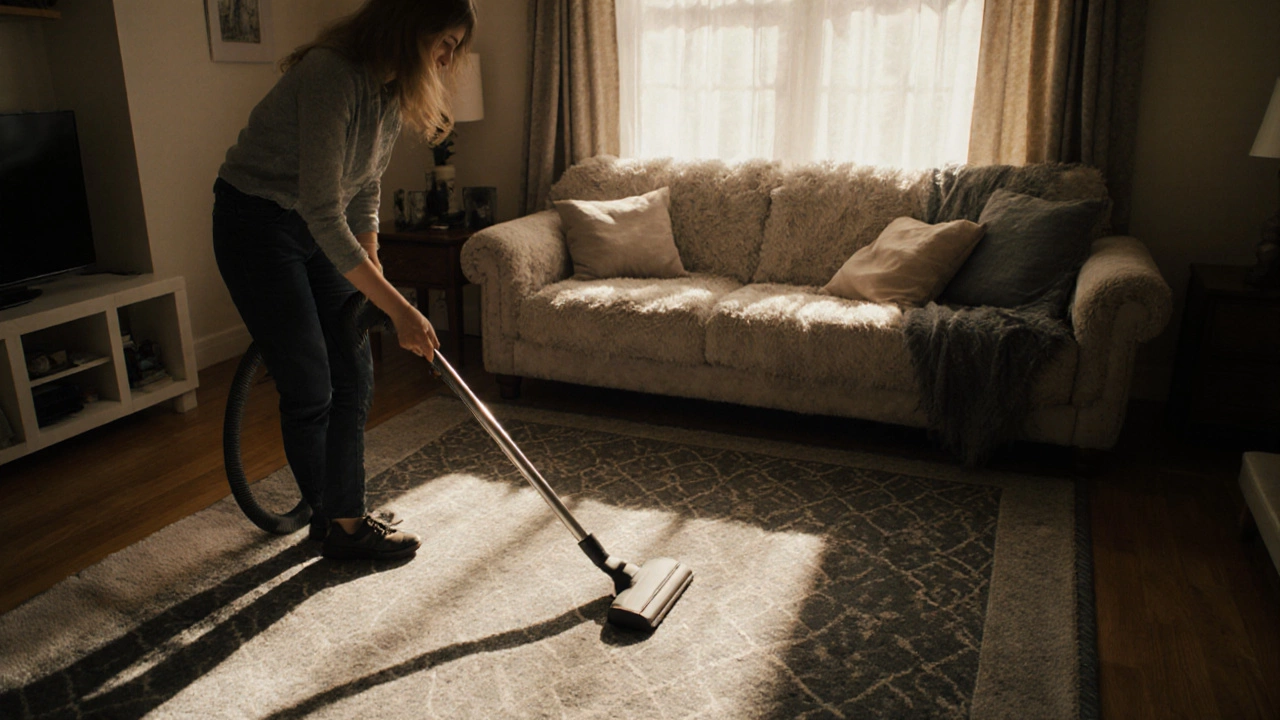
Color vs. Dirt‑Hiding Score: Quick Comparison
| Color | Lightness (L* value) | Typical Dirt‑Hiding Score | Best Use Case |
|---|---|---|---|
| Light Beige | 80 | 3 | Open living rooms with low traffic |
| Medium Gray | 50 | 7 | Family rooms, hallways |
| Olive Green | 35 | 8 | Rooms with kids or pets |
| Navy Blue | 20 | 9 | Dining areas, entryways |
| Charcoal | 15 | 9 | Modern lofts, high‑traffic zones |
Mini‑FAQ - All Your Color‑Choosing Questions Answered
Does a darker rug make a small room feel even smaller?
A very dark rug can absorb light, but pair it with plenty of wall lighting and light‑colored furniture, and the room stays airy. The trade‑off is that you gain excellent dirt concealment.
Are synthetic fibers truly as durable as wool?
High‑quality nylon or polyester can out‑last wool in high‑traffic spots because the fibers don’t shed as much. They also hold color better, which helps dark shades stay deep.
What if I have a pet that loves to dig?
Choose a low‑pile, tightly woven rug in a dark, patterned shade. The tight weave resists snagging, and the pattern masks any displaced fur or tiny tears.
Can I treat a wool rug to make it more stain‑resistant?
Yes-most wool rugs can be sprayed with a water‑based protector. Re‑apply every 12-18 months for best results.
How often should I rotate my rug?
Every 3-6 months in high‑traffic areas; less often if the rug sits in a quiet corner.
Next Steps & Troubleshooting
If you’ve already bought a light‑colored rug and are battling visible stains, try a deep‑cleaning service and add a rug‑sized stain‑guard spray. For persistent foot‑traffic lines, place a runner over the hottest path and keep the main rug as a decorative layer.
When selecting your next rug, ask yourself these three quick questions:
- What’s the main source of dirt in this room? (Kids, pets, spills)
- How much natural light does the space get?
- Do I favor comfort (high‑pile) or durability (low‑pile)?
Answering them will point you straight to the ideal color‑material combo, and you’ll spend less time scrubbing and more time enjoying your home.

